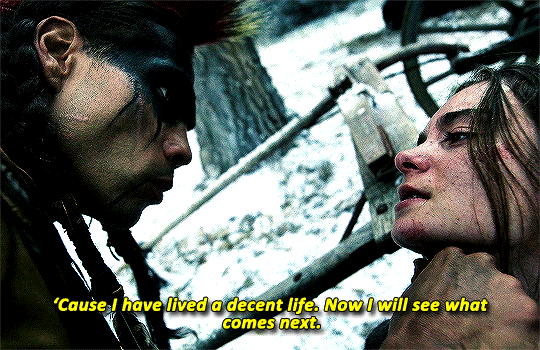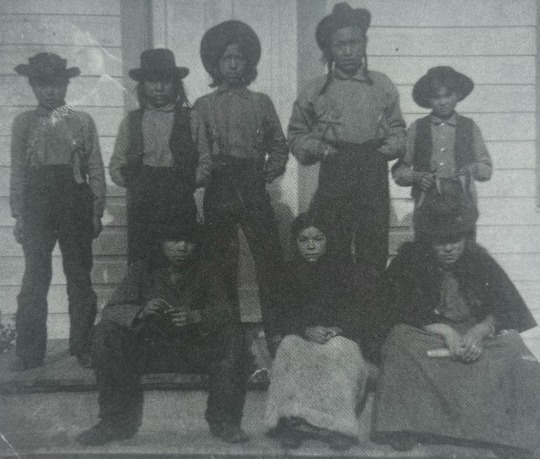#Shoshone
Explore tagged Tumblr posts
Text

Tindoor, Lemhi Shoshone chief and his wife, ca. 1897, photographed by Benedicte Wrensted.
#historical fashion#shoshone#native american#19th century#Vintage POC#1890s#victorian#Benedicte Wrensted
639 notes
·
View notes
Text

Shoshone Bannock dancer, United States of America, by Idaho Falls Magazine
#shoshone#bannock#united states of america#america#north america#folk clothing#traditional clothing#cultural clothing#traditional fashion
788 notes
·
View notes
Text





AMERICAN PRIMEVAL (2025)
Episode 2
#someone on here said meet cute😂#I just knew I was going to ship them from this scene#american primeval netflix#american primeval#abish pratt#red feather#abish x red feather#saura lightfoot leon#derek hinkey#netflix#period drama costumes#perioddramaedit#perioddrama#period drama#perioddramagif#tvgifs#tvedit#period drama gif#weloveperioddrama#perioddramasource#perioddramacentral#western#native american#shoshone
107 notes
·
View notes
Text

#original photographers#photographers on tumblr#jtmportland#original photography#shoshone#death valley
195 notes
·
View notes
Text
Idaho, USA: Rocky Mountains, Snake River (and its tributaries) and Shoshone Falls...










#nature#hiking#travel#naturecore#nature photography#usa#america#rural america#rural photography#trees#mountains#woods#forest#river#idaho#rocky mountains#snake river#shoshone#waterfalls#clouds#lush greenery#north america#travel photography
35 notes
·
View notes
Text


Original card : Shoshone
Story: This little filly lives in an Indian tribe. She is very energetic and wants to know her entire region to be a perfect guide. But since she can be a little airheaded and loses her maps, she draws on her so as not to lose her plans.
Adopt : [open]
30 notes
·
View notes
Text

Gorasimp, Shoshone - Baker and Johnston - 1878/1885
100 notes
·
View notes
Text

LaNada War Jack on the February 1970 cover of Ramparts magazine
#lanada war jack#lanada means#activist#1970#indigenous#ramparts magazine#retro magazines#indigenous american#shoshone-bannock#shoshone bannock#shoshone#indigenous peoples' day#indigenous peoples day#boots#indigenous beadwork
39 notes
·
View notes
Text
And speaking of being Western Shoshone. Fuck Congress for blocking the radiation exposure compensation act, and also fuck every news outlet who conveniently forgot to mention the residents of the Nevada test site, especially the Western Shoshone. we’re only the most nuclear bombed nation on the fucking planet
30 notes
·
View notes
Text

Mahtavis
Disk Washake
60 p-po-gan chief
Chief Weshakie
Pan zook
Tigeo
Peah-goosa
24 notes
·
View notes
Text



Shoshone, California
169 notes
·
View notes
Text

shoshone/newe hancock, because that girl is indigenous!!!!!!!!!
24 notes
·
View notes
Text
Sacagawea
Sacagawea (about 1788-1812) was a Lemhi Shoshone woman who worked as a guide and interpreter on the Lewis and Clark Expedition.
In 1804, the explorers Meriwether Lewis and William Clark engaged her as a teenager to assist them navigate the newly acquired Louisiana Territory and communicate with the Native American tribes they encountered.
Sacagawea was critical to the expedition’s success, supporting the explorers in finding food, water, and safe passage through the use of her knowledge of the terrain and language skills.
She also acted as a bridge between the explorers and the Native American tribes they met, assisting in the establishment of peaceful relationships and the securement of essential supplies.
Sacagawea’s contributions to the Lewis and Clark Expedition were critical, and she is now seen as a symbol of Native Americans’ important role in the exploration and settlement of the American West. She can also be found on the US $1 coin.

15 notes
·
View notes
Text

Quotes Junkie:
American Primeval
#american primeval#quotes#tv quotes#netflix#tv series#tv#tv series quotes#tv shows#tv shows quote#2025#wild west#western#shoshone
2 notes
·
View notes
Text

Shoshone Warrior - Baker and Johnston - 1878/1885
31 notes
·
View notes
Text

Plateau kids before church c.1910
#ndn#indigenous#indigenous history#native american#ndn country#yakima#Shoshone#nez perce#reservation#Oregon#Washington#Idaho
48 notes
·
View notes